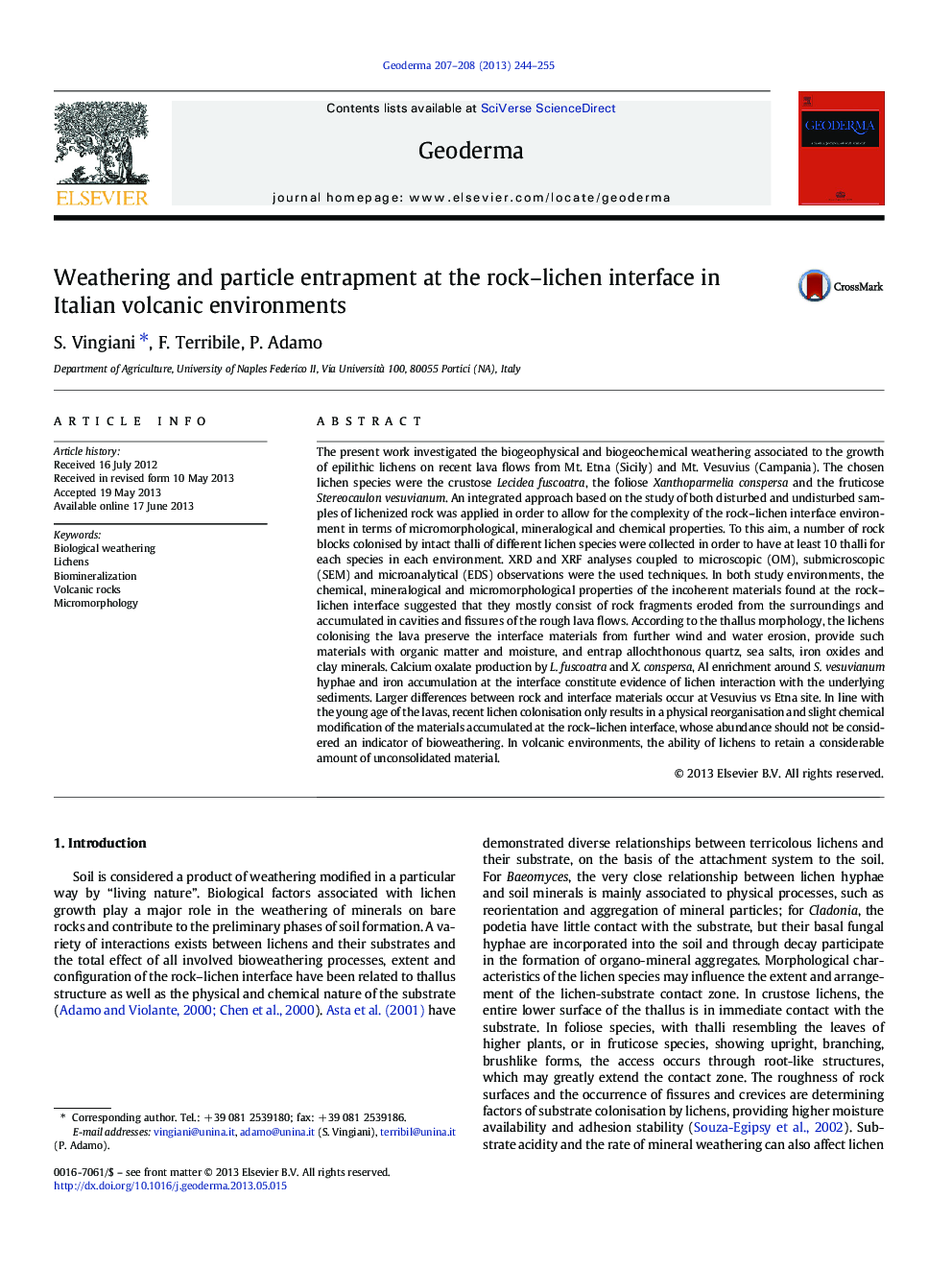| Article ID | Journal | Published Year | Pages | File Type |
|---|---|---|---|---|
| 6409175 | Geoderma | 2013 | 12 Pages |
â¢Lichen action on young lavas results in physical and slight chemical modifications.â¢Morphology and chemistry of interface material suggest origin from the surroundings.â¢Thallus morphology affects entrapment ability for interface materials.â¢Interface accumulation suggests initial stage of Al-Fe active phases neoformation.â¢In volcanic environments, lichen action may contribute to andosolization processes.
The present work investigated the biogeophysical and biogeochemical weathering associated to the growth of epilithic lichens on recent lava flows from Mt. Etna (Sicily) and Mt. Vesuvius (Campania). The chosen lichen species were the crustose Lecidea fuscoatra, the foliose Xanthoparmelia conspersa and the fruticose Stereocaulon vesuvianum. An integrated approach based on the study of both disturbed and undisturbed samples of lichenized rock was applied in order to allow for the complexity of the rock-lichen interface environment in terms of micromorphological, mineralogical and chemical properties. To this aim, a number of rock blocks colonised by intact thalli of different lichen species were collected in order to have at least 10 thalli for each species in each environment. XRD and XRF analyses coupled to microscopic (OM), submicroscopic (SEM) and microanalytical (EDS) observations were the used techniques. In both study environments, the chemical, mineralogical and micromorphological properties of the incoherent materials found at the rock-lichen interface suggested that they mostly consist of rock fragments eroded from the surroundings and accumulated in cavities and fissures of the rough lava flows. According to the thallus morphology, the lichens colonising the lava preserve the interface materials from further wind and water erosion, provide such materials with organic matter and moisture, and entrap allochthonous quartz, sea salts, iron oxides and clay minerals. Calcium oxalate production by L. fuscoatra and X. conspersa, Al enrichment around S. vesuvianum hyphae and iron accumulation at the interface constitute evidence of lichen interaction with the underlying sediments. Larger differences between rock and interface materials occur at Vesuvius vs Etna site. In line with the young age of the lavas, recent lichen colonisation only results in a physical reorganisation and slight chemical modification of the materials accumulated at the rock-lichen interface, whose abundance should not be considered an indicator of bioweathering. In volcanic environments, the ability of lichens to retain a considerable amount of unconsolidated material.
